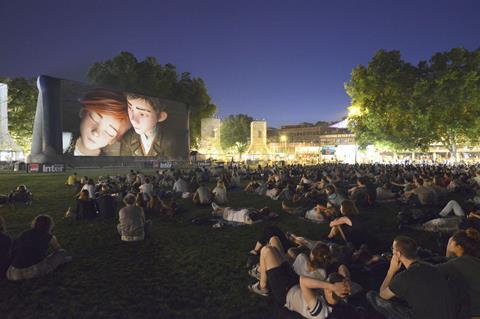
Women are taking strides in the animation world although more needs to be done to support women of colour, a new report from inclusion expert Stacy L. Smith will reveal at today’s (June 10) launch of Annecy International Animation Film Festival.
“In the last 12 years, 37% of producers of animated movies were women, while for live action films, the figure was 15%,” Smith said, announcing her report, ‘Inclusion In Animation’, in France. She continued, “However, only 5% of producers of animated films and 1% of live action producers were women of color. The movie industry is completely out of step with the audience in this regard.”
“In the last 12 years, 37% of producers of animated movies were women, while for live action films, the figure was 15%,” Smith said, announcing her report, ‘Inclusion In Animation’, in France. She continued, “However, only 5% of producers of animated films and 1% of live action producers were women of color. The movie industry is completely out of step with the audience in this regard.”
The report from Smith and the USC Annenberg Inclusion Initiative was conducted in partnership with Women in Animation, and examined animation across film and popular TV series, evaluating the prevalence of women above and below the line in key roles, and in the executive ranks across major companies and studios.
The research assessed the pipeline for women in animation across animation programmes and animated short films at premiere festivals, and it includes 75 in-depth interviews with early-career women and decision-makers, as well as survey data from more than 250 individuals in the Animation Guild.
The study found that women comprise roughly half of the executives in animation, and hold half of the most powerful positions in major film animation companies and studios. Data from animation programmes and film festivals reveals a robust pipeline exists from animation classrooms into early career.
The low proportion of women of colour in animation meant the industry was, Smith said, “completely out of step with the audience in this regard.”
Data on film directors and unit heads in animated movies and TV series suggest that once women enter the animation field, they opt out or are pushed to other work as they navigate the career paths to a prominent creative job. Only 3% of animated film directors over the last 12 years were women, while 13% of episodes evaluated across popular animated TV programmes from 2018 had female directors. Only one female film director and three female TV directors came from underrepresented racial/ethnic backgrounds. All four were Asian.
“Women from a variety of racial/ethnic backgrounds were not working as directors across film or TV,” said Smith.
In contrast to film, 20% of executive producers, 17% of co-executive producers, and 34% of producers in TV were women. Only six women of color were executive producers, while 8% of producers were women from underrepresented racial/ethnic backgrounds. Seventeen percent of ‘Created by’ or ‘Developed by’ credits in TV were held by women, with just three earned by women of colour.
In below-the-line roles, women are still outnumbered in film and TV. Across 52 top animated films from the past five years, only 7% of head of story positions were filled by women, as were 8% of animation heads, and 14% of art directors. Women of colour held 6%, 3%, and 4% of these positions, respectively. Across 100 popular animated TV series, females comprised 16% of animation directors, 20% of lead animators, and 11% of lead storyboard artists.
The study noted slightly higher percentages of women of colour in these roles compared to film, as 8%, 13%, and 3% of positions across these respective jobs went to women from underrepresented racial/ethnic backgrounds.
“This study validates what we have known all along, that women are a hugely untapped creative resource in the animation industry,” said Marge Dean, president of Women in Animation. “Now that we have a greater understanding of how the numbers fall into place and what solutions may help rectify this deficiency, we can take bigger strides towards our goal of 50-50 by 2025.”
Results from the analysis reveal the major impediments facing women in the animation industry. Respondents indicated a male-dominated and masculine culture affects females, that the industry view of women is less valuable, and that women are perceived to be less interested in the field. Unique impediments facing women of colour were also explored, namely the negative consequences that emerge from being a “token,” including feelings of isolation.
“One sentiment that emerged from the qualitative responses was a sense of distrust and skepticism from animation industry members about current efforts surrounding inclusion,” said Dr. Katherine Pieper, one of the study authors. “As organizations and individuals grapple with how to support and extend the careers of women in the industry, including women from all backgrounds and communities, the goal must be to ensure that everyone feels a sense of belonging and that men and women are committed to target inclusion goals and working collectively toward achieving them.”
Further study results will be unveiled at the third annual Women in Animation World Summit, held in partnership with Les Femmes s’Animant (LFA), at the Annecy International Animation Festival and Mifa 2019.

























No comments yet